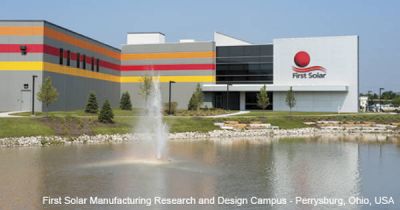First Solar gets sunnier outlook down under and in Germany
 First Solar's had some less than stellar days of late but you can't count the world's largest tin-film manufacturer down and out by any means. The company recently made two announcements, first that it will develop two new utility-scale projects in Australia and second that it had to reopen manufacturing lines in Germany that were slated for shuttering later this year. The actions have spurred renewed interest in the company from Wall Street.
First Solar's had some less than stellar days of late but you can't count the world's largest tin-film manufacturer down and out by any means. The company recently made two announcements, first that it will develop two new utility-scale projects in Australia and second that it had to reopen manufacturing lines in Germany that were slated for shuttering later this year. The actions have spurred renewed interest in the company from Wall Street.
The company signed a deal to design, construct and maintain two utility-scale solar projects for AGL Energy Limited as part of Australia's Solar Flagships Program. Construction is slated to begin on both 106 MW Nyngan and 53 MW Broken Hill projects in New South Wales in 2014. Electricity produced by the projects will be sold to AGL subsidiary AGL Hydro Partnership.
Under the agreement First Solar will also provide maintenance on the projects for their first five years, according to spokesperson Alan Bernheimer. "We typically provide O&M services on the utility scale projects that we design, engineer, and construct using our modules and balance of systems technology," he said.
It's not First Solar's first installation on the continent. "First Solar is constructing a 10 MW facility in Western Australia for Verge Energy and GE Energy Financial Services," Bernheimer said. But they are certainly the largest it's pursued there.
The second piece of good news coming from the company is that increased demand through 2012 has forced the company to reopen manufacturing lines at its plant in Germany. "In response to higher than expected near-term demand in Europe, First Solar is returning to a full work schedule in Frankfurt (Oder) to support an increase in production through year-end. We expect to operate both of our factories there near full production capacity through October, and then begin to wind down production and close the facility by year-end," Bernheimer said. The company did not disclose where demand for the modules was coming from, according to Bernheimer.



